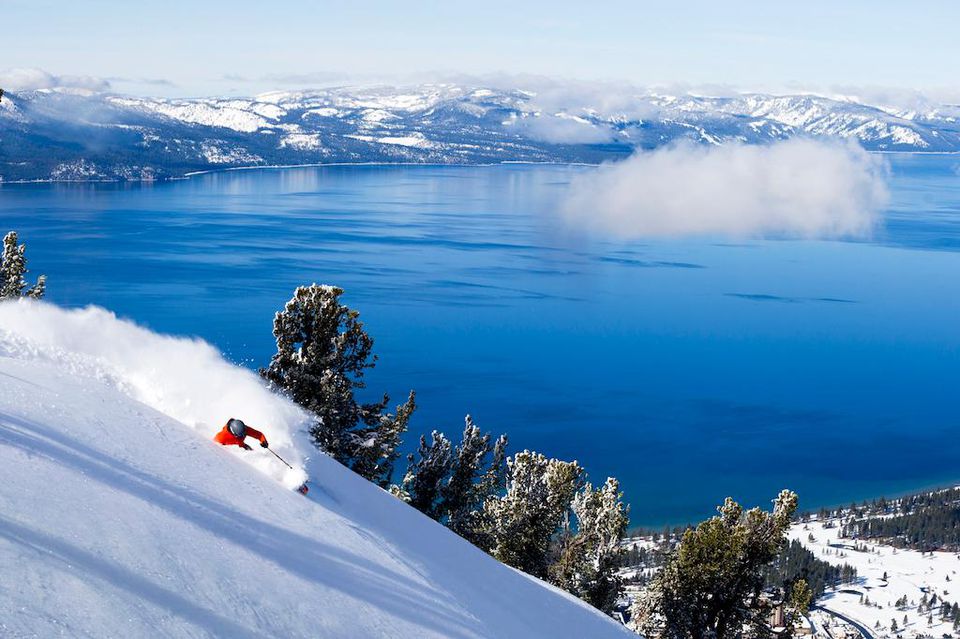INCLINE VILLAGE, Nev. – An ages old Wá∙šiw (Washoe) story outlines the journey of a large black and white flightless bird that carried a pouch of seeds. What the bird did with those seeds would go on to have important implications for the people and land. It’s a story tribe member Herman Fillmore shared in his discussion on how culturally significant stories relay data and observations through time at the Ethnobiology Conference that took place last month at the University of Nevada, Reno’s Tahoe Campus.
As the Tribe’s Culture and Language Resources Director, Fillmore has been working with elders and children to preserve and sustain the Washoe language, including through these stories.
The culturally significant story continues with the bird sharing the seeds with multiple species who were navigating survival amid the harsh conditions of ice and snow.
“For Washoe people, that’s a big cultural teaching,” Fillmore explained, “to care for others, to give them what you have, to take care of the whole, right?”

But that wasn’t the end of the story. As the seeds got low, the bird decided to plant them for the future. The story conveys how those seeds then grew into the pinyon pine (Pinus monophylla) that grows throughout the Great Basin today.
“This is something that Washoe people, because of our presence in this place,” Fillmore explained, “saw come to fruition.”
The story doesn’t just emphasize morals and teachings of the Washoe culture, it has also encapsulated observations, experiences and data, preserving them over time.
It’s information that Fillmore has shared with researchers David Thomas and Constance Millar on a project that explores the expansion of pinyon pine by incorporating tribal oral histories and ecological knowledge.
“And so in this project,” Fillmore said, “it’s been a lot of fun to go through and to talk about the importance of our pine nuts, but even more so, to give credence to the idea of this being a direct observation by Washoe people 12,000 years ago, when Pinus monophylla entered the western edge of the Great Basin.”
This wasn’t the only example of how the Wá∙šiw language, legends and stories reflect data and observations passed down generation to generation, many times over.
Another story Fillmore shared exhibited data synonymous with research initiated in the late 1990s that theorizes a tsunami.
The Wá∙šiw story follows two brothers in an incident in which the younger brother invokes a large wave that came from the western shore to the south shore. The tsunami theory of the nineties hypothesizes a landslide trigger that started the tsunami near McKinney Bay between 10,000 – 20,000 years ago—on the western shore.
“The cool part here is this connection with place, this observation, the capturing of this story, and the relaying of this information, not just in a generation’s time,” Fillmore expressed, “but for potentially 15,000 years.”
The story also names sacred sites for the Wá∙šiw people, including magóyat (Incline Village), dawgašásiw wáťa (Cave Rock), dawgašásiw wáťa (Taylor Creek), and dewbeyúmuweɁ (the Truckee River leaving the lake).

Fillmore stated the importance in recognizing how the Washoe people integrated data and observation as an inherent and organic part of their culture.
“It wasn’t something that was talked about or sought after,” he said, “but something that was a baseline understanding.”
Fillmore delved into how the very language that tells the stories also reveals another innate perspective of the Washoe people—that of reciprocity for place.
This is demonstrated with the Wá∙šiw phrase that explains where someone is from. Rather than meaning “from this place,” Fillmore explained it means, “I am this place.”
“That this land is an extension of me and I’m an extension of place as well,” he added.
The Washoe language also displays a reverence for Lake Tahoe. One of the Tribe’s words for Lake Tahoe is dáɁaw. The direct translation means “the lake.” Its significance is reflected in the fact that other regional lakes have qualifiers in front of dáɁaw.
“And so I really like the idea of the reverence for this place. That when you refer to just a lake, everybody recognizes it as the Tahoe Basin,” Fillmore said. “Any of the other lakes you talk about, you might want to add something to it because it just doesn’t compare, right?”

Herman shared that much of the tribe’s work today in the Tahoe Basin has been elevating the concept of the lake as a person, to give it personhood, credence and protection.
The 46th Annual Conference of the Society of Ethnobiology took place May 21-24, discussing topics of the interdisciplinary study that delves into the relationships among peoples, plants and animals, as well as their environments.

